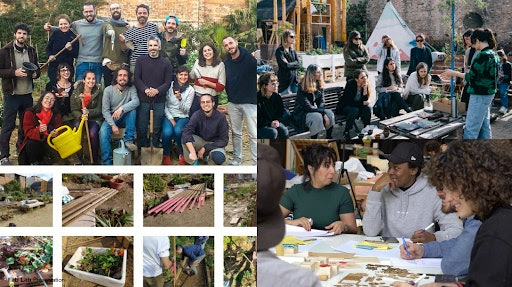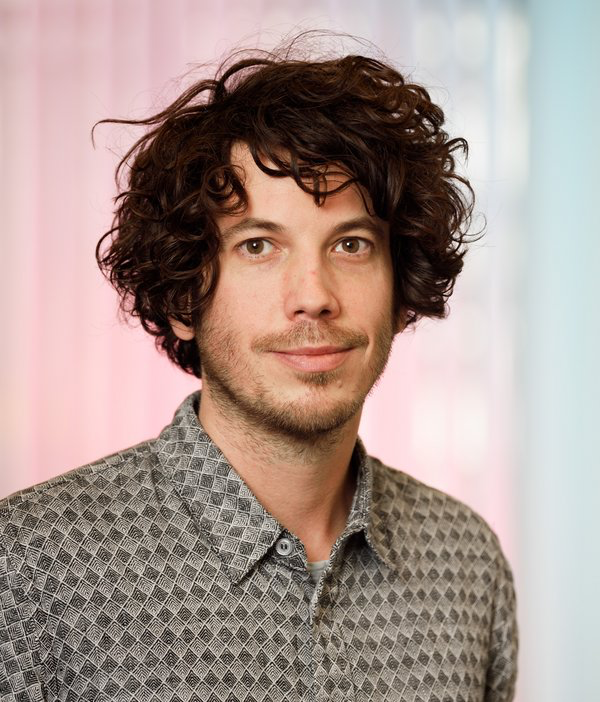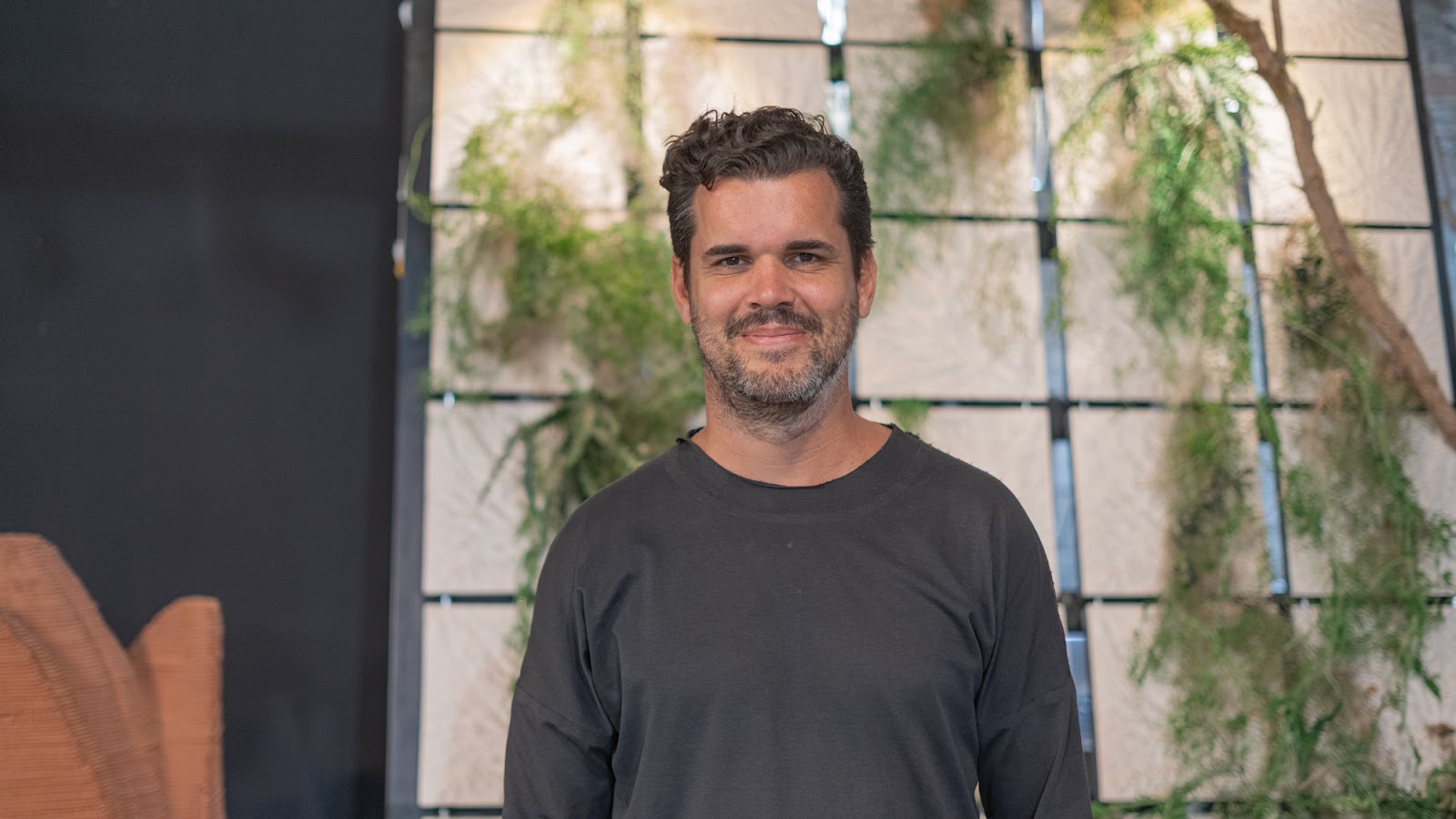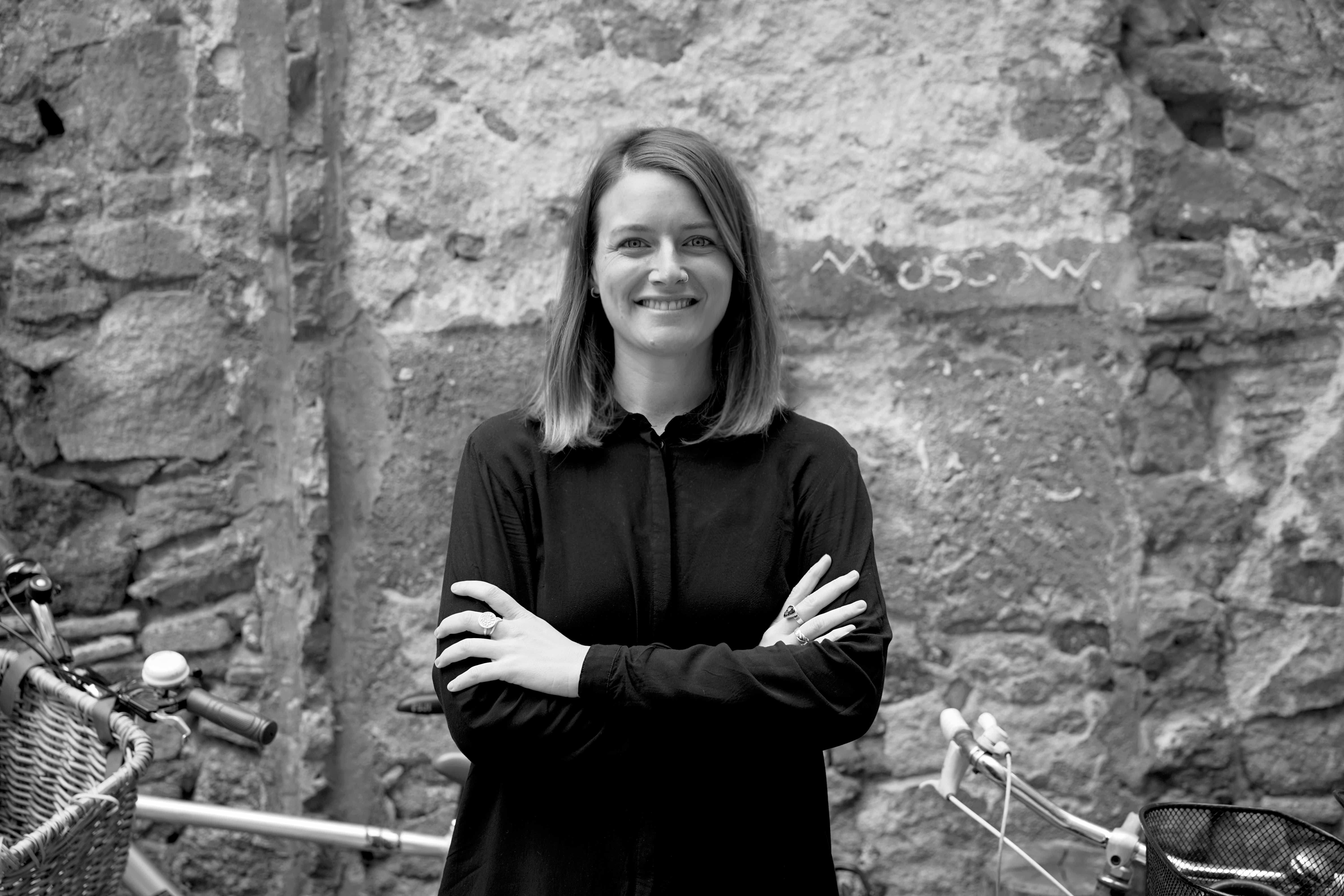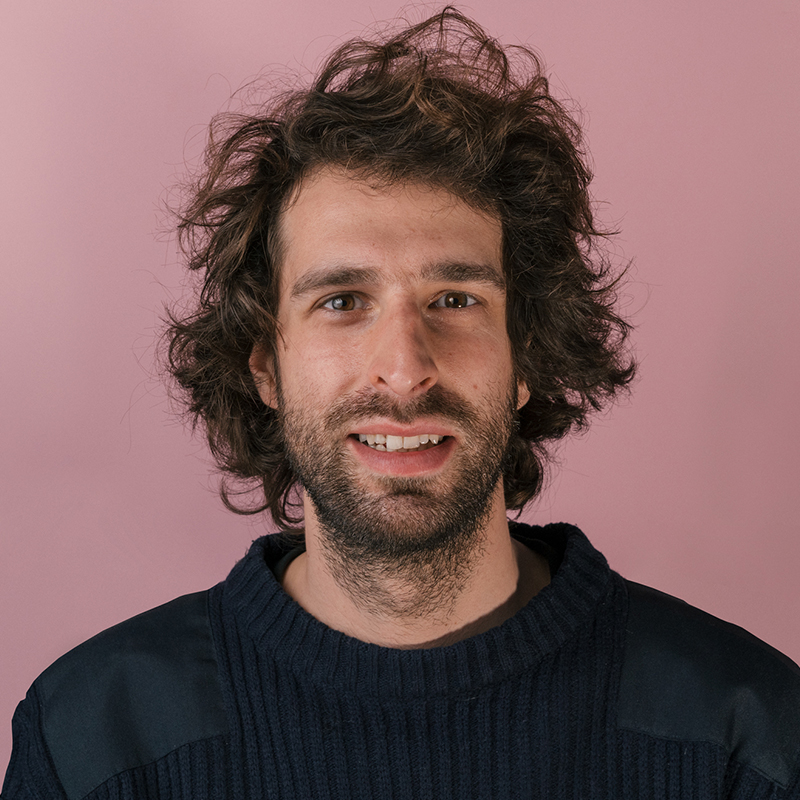Syllabus⇝
MDEF Research, Design and Development studios aim to take research areas of interest and initial project ideas into an advanced concretion point, and execution plan. The studio structure in three terms could be understood as follows:
TERM 1 Research: Understanding what it means to design for emergent futures. Analyzing the past and finding weak signals. References, state of the art. Identifying areas of interest. Experimenting from the first-person perspective.
TERM 2 Design: Forming the present through interventions in the real world. Building the foundations of your design space, forming strategic partnerships. Applying knowledge into practice through iterative prototyping. Testing ideas and prototypes in the real world.
TERM 3 Development: Refining interventions and identifying desirable futures. Establishing roadmaps for the construction of emergent narratives.. Communicating and disseminating your project through speculative design.
The second term Design Studio aims to refine the work developed by students during the first term of the Master's program. After identifying areas of interest from weak signals in the first term, and creating their design space and first interventions, students will be encouraged to take a further step into their projects, focusing on finding and growing their communities of practice and developing interventions in the real world (digital or physical).
Deliverables⇝
Goals: Critically look back at your project, reflect on the feedback from the Design Dialogues, and propose a new scope, goals, and next steps.
Activity: Briefly present in class 3 of the main learning points from the 1st trimester.
Objectives: To incorporate a series of tools and methodologies to navigate through complexity in a current continuously changing reality.
Assignment: Reflect on your and your project’s current stage of development and by means of comparing yourself and your current project to previous projects, situations you have been in, and other projective techniques that will be explained in class.
Deliverable: An updated version of your design space with a 500-word text with a summary of your journey so far, contextualizing your new locality and community. Make explicit new project goals and next steps including a proposal for the 1st intervention of the second trimester (a draft will be discussed during the design reviews the week after).
Tuesday 25/01 - 2:00 to 7 pm CET - A 1PP Design intervention in context. Look for your peers and communities⇝
Goals: Understand better yourself as a design tool in contexts, learn how to properly document, analyze and make sense of a design action from a 1PP.
Activity 1: Briefly present in class a proposal for the 1st intervention of the second trimester.
Activity 2: Plan your first design intervention of the term and map the actors and infrastructure you want to involve.
Task: Carry out your 1st design intervention from a 1PP (involving yourself in the context you want to work on).
Deliverable 1: Document the 1PP design intervention, analyze it, and reflect on the findings. Describe the alternative present scenario that this intervention is offering.
Deliverable 2: Update your design space with the relations you have built.
Tuesday 08/02 - 2:00 to 7 pm CET - Network of co-responsibility. (Co-)designing for emergent futures in the present.⇝
Goals: Reflect on your network of co-responsibility. Look for your peers and communities to get feedback from.
Activity: Present your results from your 1PP design intervention. Reflect on your work based on Sergio’s Future Talk and guidelines given in class.
Activity 2: Analyze and map the reach of what you are able to respond to. Decide which relations you need to be co-responsible for and which you can delegate.
Task: Plan and execute a 2nd design intervention, a collective design intervention.
Deliverable: Document the 2nd collective design intervention, analyze it and reflect on the findings. Describe the alternative present scenario that this intervention is offering.
Deliverable 2: Update your design space with the relations you have built.
Tuesday 22/02 - 2:00 to 7 pm CET - Pushing the boundaries of your interventions⇝
Goals: Understand how an exercise in radicality might serve as a tool to expand the limits of the alternative presents you are proposing.
Activity 1: Present your results from your 2nd design intervention.
Activity 2: Focus on your doubts and limitations and try to learn about them through designing an intervention with the resources you have.
Task: Plan and execute a 3rd design intervention, a final and more complete one.
Deliverable 1: Document the final design intervention, analyze it, and reflect on the findings. Describe the alternative present scenario that this intervention is offering.
Deliverable 2: Update your design space with the relations you have built.
Tuesday 08/03 - 2:00 to 7 pm CET - Biographies and constituencies. Ways of drifting in post-human design. (Ron Wakkary)⇝
Goals: Understand the agency of the context you are working in. Let the human and non-human actors be a driving force in your project.
Activity 1: Present your results from your 3rd collective design intervention.
Activity 2: Reflect on your project from a Post-human design perspective. Map the actors and infrastructure you have involved and include them in the 3 iterations of your design spaces.
Deliverable: Map, visualize and analyze the evolution of your design space over the 3 iterations based on ways of drifting.
Tuesday 15/03 - 2:00 to 7 pm CET - Design Dialogues II Preparation with Kate⇝
Goals: Create a collective and individual building-up plan for the Design Dialogues exhibition.
Activity: Group dynamic to create themes and groups of projects for the exhibition.
Deliverable: Planning of the exhibition, space allocation, and special needs.
Task: Work on the design dialogues deliverables.
Tuesday 28/03 - Time TBD - Design Dialogues⇝
Deliverables - Due date: Friday, 22nd of April⇝
(Optional) 2-5 min video-documentary (video-journaling) of your 3 Term II interventions - for presenting during Design Dialogues and for uploading to the Emergent Futures Community
Visual material to support the exhibition.
Evolution of physical and/or Digital prototypes from your Design Space
5 high-resolution images of your interventions during the term
Thesis Draft - Chapters 4-6 are made up of the weekly deliverables for this term. (Due Friday 22nd of April):
Chapter 4: Reframing of the project - Include here the reflection you did in the beginning of Term II.
Chapter 5: TERM II Interventions - a. Document here each of the interventions and experiments you deployed this term. b. Document the evolution of your Design Space throughout these interventions. c. Reflect on the Alternative Present that you are creating with your project.
Chapter 6: Updated Vision and Identity (Future Talks Reflection) - Include here a revised version of your Vision and Identity chapter from Term I, commenting on the key inspirations and learnings you take from the guests we invited for the Future Talks
Faculty⇝
Oscar Tomico is associate professor at the Department of Industrial Design at Eindhoven University of Technology on Design Research Methodologies for Posthuman Sustainability. His research revolves around 1st Person Perspectives to Research through Design at different scales (bodies, communities and socio-technical systems). Ranging from developing embodied ideation techniques for close or on the body applications (e.g. soft wearables), contextualized design interventions to situate design practice in everyday life, exploring the impact of future local, distributed, open and circular socio-technical systems of production, or experimenting with cohabitation as a posthuman approach to multi-species design.
Multimedia developer, interaction designer & researcher, Mariana Quintero works and develops her practice at the intersection where digital fabrication technologies, digital literacy, and information and computation ethics & aesthetics meet, contributing to projects that investigate how digital information and technologies translate, represent, and mediate knowledge about the world. She is currently a faculty member and part of the strategic team at the Masters in Design for Emergent Futures at IAAC | Fab Lab Barcelona.
Tomas Diez Ladera, a Venezuelan Urbanist, Designer, and Technologist, is known for his expertise in digital fabrication and its impact on future cities and society. He is a founding partner and executive director of the Fab City Foundation, and he also serves on the Institute for Advanced Architecture of Catalonia’s board of trustees, where he holds positions as a senior researcher and tutor. He actively collaborates with the Fab Foundation to support the global Fab Lab Network and has played a significant role in launching initiatives such as the Fab Academy and Fab City.
Tomas co-founded and co-designed projects like the Smart Citizen initiative and the global Fab Lab Network platform, fablabs.io. Additionally, he co-created higher degree programs, including the Master in Design for Emergent Futures (IAAC-Elisava) and the Master in Design for Distributed Innovation (Fab City-IAAC), both of which he co-directs. As a founding partner and President-Director of the Meaningful Design Group Bali, he aims to combine advanced technologies and design with alternative perspectives and cultures in Indonesia and Southeast Asia. He has received recognition as a young innovator of the year by the Catalan ICT Association and was nominated as one of Nesta's and The Guardian's top 10 Social Innovators in Europe.
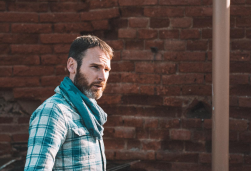
Jonathan Minchin studied Fine Arts and Design Craftsmanship and digital Fabrication. He attained BA in Architecture and a masters degree MSC in ‘International Cooperation, Sustainable Emergency Architecture’ in 2010. He is coordinator of the EU funded research project called ROMI (Robotics for Microfarms) and has spoken at the European Commission and British Parliament.
In this field he has worked on housing and development projects alongside ‘Habitat for Humanity’ in Costa Rica, ‘UNESCO’ in Cuba and with ‘Basic Initiative’ in Tunisia.
He has worked in conjunction with ‘UN-Habitat’ in Barcelona and holds a particular interest in appropriate technology, bioregional industries and agroecology. His professional career has focused on architectural and urban development projects with Architects Offices in both England and Spain and his writing on “Geographic referencing for Technology Transfer” was published in the book “Reflections on Development and Cooperation” in 2011. He took part in the Fab Academy, Bio Academy and Coordinated the Green Fab Lab and Valldaura campus between 2012 and 2017.
Jonathan has also worked on the on the DIYBio Barcelona project.
A Master Arts and Society (University Utrecht) and Bachelor of Design (UNSW), Kate has vast experience in cultural programming, design and open tech fields in Australia and Europe. She has been the communication and dissemination manager for various European research projects at Fab Lab Barcelona concerned with circular economy, open design innovation ecosystems and future cultural heritage. She managed the Distributed Design Platform, a Creative Europe Platform co-funded by the European Commission and currently serves as its strategic advisor. Kate sits on the Executive Board of the Fab City Foundation, as the global initiative’s Strategic Director. She is Faculty of the Master in Design for Emergent Futures at IAAC/ELISAVA, Faculty of the Master in Distributed Design and Innovation and Head of Programming for Interspecies Internet - a global think tank to accelerate interspecies communications.
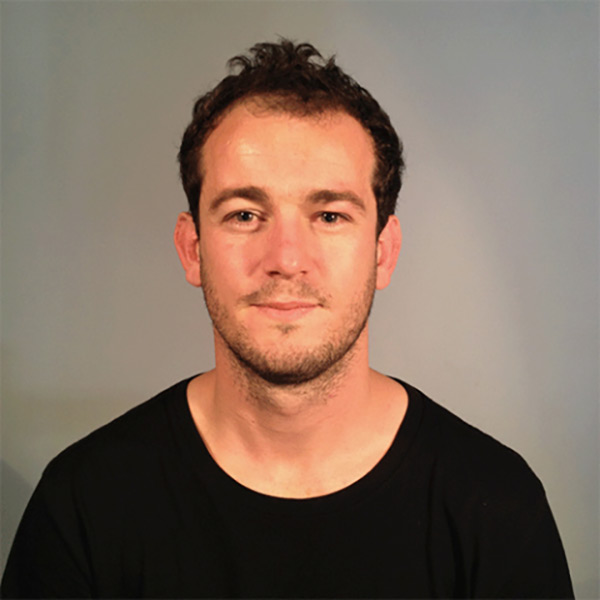
Tomas Vivanco
Assistant Professor / Director Fab Lab
Assistant Professor / Director Fab Lab Austral Universidad Católica de Chile. Architect, UVM. Master in Advanced Design, ELISAVA – Pompeu Fabra University. Master in Advanced Architecture. IAAC- Polytechnic University of Catalonia. PhD(c) Architecture, Digital Futures. Tongji University.
Tomás is an assistant professor at the UC School of Design and director of the Fab Lab Austral UC Regional Station in Puerto Williams. In undergraduate courses he teaches Associative Design and Workshop courses with topics ranging from Bio Manufacturing, Low Energy Material Systems, Speculative Design and Ecosystem Oriented Design. In the Master in Advanced Design he teaches the courses in Anatomy of Prototypes and Systems, and Speculative Design.
Guillem Camprodon is a designer and technologist working in the intersection between emergent technologies and grassroots communities. He is the executive director of Fab Lab Barcelona at the Institute for Advanced Architecture of Catalonia (IAAC), a benchmark in the network of over 2000 Fab Labs and home of the Distributed Design Platform. He has a passion for teaching and is the co-director of the Master on Design For Emergent Futures (MDEF), a collaboration between IAAC and ELISAVA. Previously, he led Smart Citizen, a platform that opposes the traditional top-down Smart City model, empowering communities with tools to understand their environment. As a former research lead, he participated in many European-funded research and innovation projects, such as Making Sense, iSCAPE, GROW Observatory, Organicity, DECODE, ROMI and Reflow.
